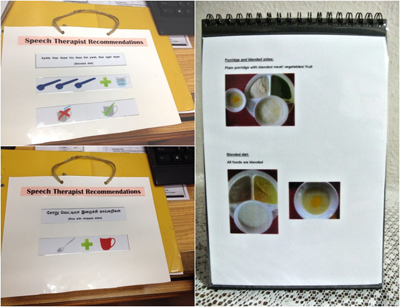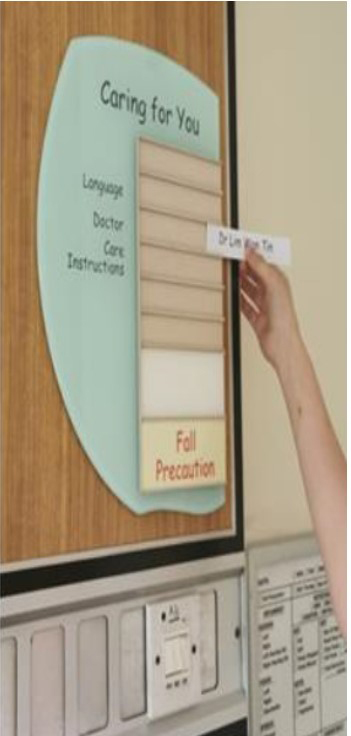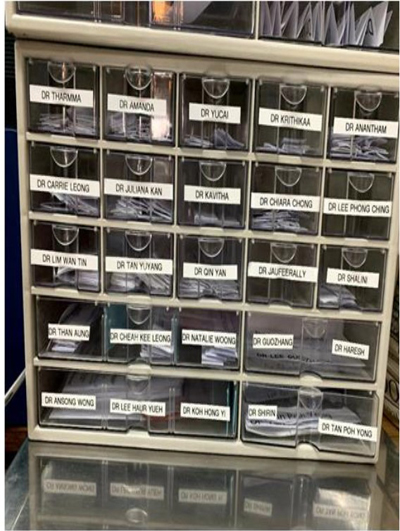Nurse Clinician Siti Khadijah, Quality
Improvement Star of the Year, recommends QI as the ‘medicine’ and debunks 3
myths that may be holding you back from using it.
Do you have problems at work that keep recurring and frustrate you and your colleagues no end? You have tried to come up with solutions but they do not work, and you do not really know why?
Nurse Clinician Siti Khadijah, our reigning Quality Improvement (QI) Star of the Year, recommends the systematic tools and methods of QI. "From my 16 QI projects over the past nine years, I will tell you that QI is definitely worth the time and effort," she says.
Removing your pain points is a perfectly legitimate starting point, as she debunks 3 myths about doing Quality Improvement projects.
Myth 1: QI Projects don't work!
"That is certainly untrue. You can really solve a problem that you have at work through a QI Project," exclaims Nurse Clinician Siti Khadijah.
She cites her first QI project, Thicker or Thinner, that she led in Ward 73, as an example. Half of the patients with swallowing difficulties were getting food of the wrong consistency, posing a high risk of choking or even chest infection. As a staff nurse seeing patients daily, she empathised with the struggles faced by nurses and caregivers on food preparation. Firstly, the nurses and caregivers could not easily refer to the instructions written in the case notes. Secondly, caregivers often have difficulty following the verbal briefings by nurses, due to language barriers or forgetfulness.
Siti took on the challenge to gather a team of colleagues with shared passion to solve the problem within 3 months. The decision to embark on a QI project was not easy because Siti found QI tools daunting or irrelevant. "I associated a QI project with additional workload of crunching numbers and doing presentations, and was not sure how a QI project could help solve my problem," says Siti.
With the support of a QI coach, she was gradually converted. With her QI coach explaining the principles of QI to her, she started to see how the tools help a team organize their thoughts and prioritize their efforts, to maximize outcome given limited resources. The QI tools came in handy when the team had to reach consensus on the root causes to address and the solutions to pilot.

(From left) Boards and flip charts from the QI project 'Thicker or thinner' led by Siti to make food preparation instructions readily available and easy to understand.
With the aid of QI methodologies, the team created visual food preparation instruction boards and flip charts, to make sure the graphic instructions are readily available and easy to understand for all, at a low cost. At the end of the third month, all patients got food of the right texture, thereby reducing their risk of chest infection.
Myth 2: My idea is too small to be worth my team's time and effort.
"There is no such thing as too small an idea. In fact, it is just nice to start small, one step at a time," says Siti. For Siti, a small idea often means that it's actionable, and could lead to a substantial improvement, based on her experience coaching the Sort-O-Sorter project.
It seemed like a simple matter – updating the doctors' names displayed above the head of each patient's bed in Ward 73. But for an 83-bedded ward with high patient turnover, it took the nurses and Patient Services Associates an hour every day to do this task.

The nurses or PSAs at W73 update the doctor's information at the patient's bed for every new admission.
Strips of paper had been pre-printed with doctors' names and cut to size. But the PSAs and nurses had a hard time finding the folder containing the strips in the pile of folders at the nurses' counter. They then had to sift through the strips jumbled together inside the folder to find the correct one.
As a result, the nurses and PSAs had to frequently reprint and cut the strips. Delays in updating made it difficult for nurses to follow up with the correct doctor for the new patients. Patients were stressed when they were left wondering who their doctors were.
A team of PSAs from the Ward mooted this for a QI project. Siti was the QI coach to help the team approach the problem systematically. She guided them to use QI tools to select ideas that could be easily implemented and sustained. After implementation, the team spoke to doctors and nurses to fine tune the solutions.

The Ward 73 team came up with this system of storing the name strips that made the process of updating the doctor's name more efficient.
The team eventually created a system of clear trays for the strips - one tray per name and clearly labeled - and placed the tray at the nurses' counter. Now the right strip could be retrieved at one glance. This system was so well-received by the nurses that the team expanded it to include strips with special instructions in different languages.
As a result of their small intervention, the PSAs and nurses now take 10 minutes instead of an hour every day for this task. Siti recalls how the team was empowered and gained confidence through the process, "Initially they were quite hesitant to initiate a QI project. But as they progressed, they looked forward to implementing their ideas, and actively reminded one another to maintain the new system."
Myth 3: I don't have any fresh ideas for projects.
"Look no further - your grouses at work or patient feedback are the best source of project ideas," says Siti. For example, the PSAs came up with the idea for the doctors' label project because the PSAs and nurses were frustrated with having to spend an hour everyday on the tedious task of printing and cutting, on top of their many other tasks.
For the Thicker or Thinner project, our nurses were frustrated that they had to constantly repeat the food preparation instructions to the caregiver and nurse. They would rather spend the time caring for their patients.

Siti (extreme left) with her Slot-O-Sorter
project team mates.
Over the past nine years, Siti has taken part in 16 QI projects. What fuels her fire for QI? Says Siti, "Thanks to Ward 73's culture that is hungry for improvement, my QI 'fire' has been burning bright since I started doing QI projects in 2013." Her QI mindset and can-do spirit makes her sharp at spotting areas of improvement at work, and she turns daily encounters with her project teammates into mini discussions on the next idea to work on.
She admits that she has had her fair share of projects that did not work out. "Sometimes the workflow changed, staff resigned, or the team just lost momentum. This can't be helped," says Siti. "I just tell myself that QI projects really improve care for our patients and make our colleagues happier. So we must keep going."
Have an idea for a QI project or need to engage a QI coach? Pls contact the good people at Process Transformation and Improvement.
We love mail! Drop us a note at lighternotes@sgh.com.sg to tell us what you like or didn't like about this story, and what you would like to see more of in LighterNotes.
